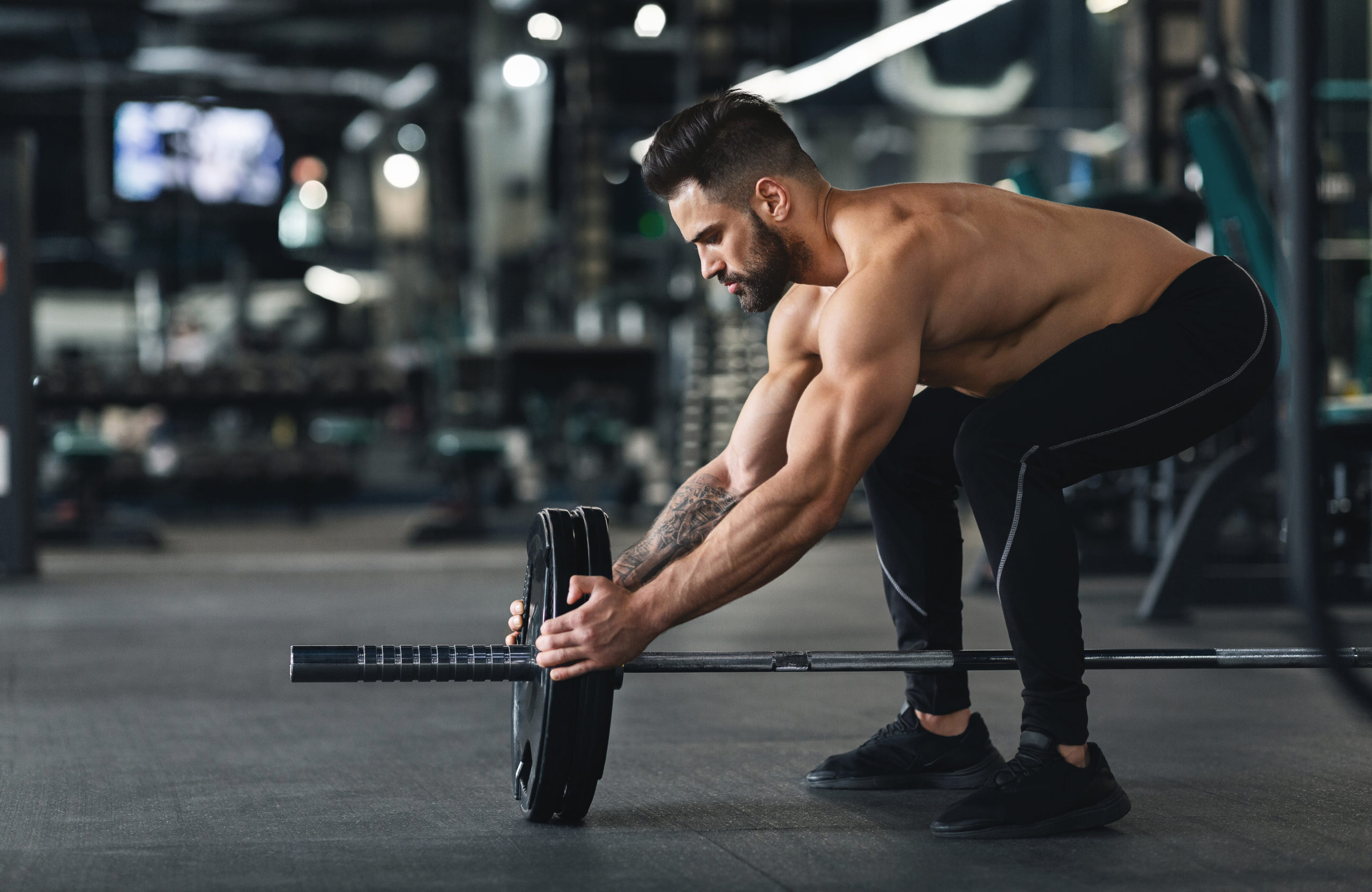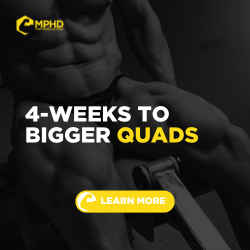Introduction
As David Letterman would say, “My next guest needs no introduction.” Just about everyone has a general understanding of progressive overload and why it’s necessary for a training program. However, there’s several different intricacies that swirl around the topic that can easily confuddle a light afternoon’s reading. So, before we get further into the discussion on the methods of progressive overload, we need to differentiate some specific terms:
Achieved Overload: Achieved overload is progressive overload in action. Say you did 3 sets of 10 at 225lbs on bench press last week, and this week you did 3 sets of 10 at 230 pounds. You have achieved overload (assuming your form was great during both sessions, we’ll touch on that later). In the truest sense of the word, this would be the defining characteristic of progressive overload (5).
Planned Overload: This is probably the most common way people would define progressive overload. Planned overload includes all of the variables in a training program that you can alter in order to plan overload (5). Now, actual overload does not occur unless you achieve it, but to achieve this overload, you have to plan it. Therefore, both planned and achieved overload are necessary for gains and are highly related.
Progressive Overload vs Progressive Resistance: Lastly, we need to differentiate these two terms before moving on to the specific types of overload. Progressive (planned) overload involves using all of the variables in a training program to create a form of overload, whether it be biomechanical, load, or metabolically based. On the other hand, progressive (planned) resistance is the more classic style of overload in which just weight or rep schemes are altered (7). Progressive resistance is easily the most common implementation of overload, so let’s start our discussion on progressive overload there.
Method 1: Progressive Resistance
 Like we already stated, progressive resistance is probably the most common method of progressive overload in a training program. It’s incredibly easy to plan and track progress with, but there’s certainly more than meets the eye if you want to move to more advanced programming.
Like we already stated, progressive resistance is probably the most common method of progressive overload in a training program. It’s incredibly easy to plan and track progress with, but there’s certainly more than meets the eye if you want to move to more advanced programming.
We know that volume is important for growth, and volume is often calculated as sets x reps x load. Therefore, simply increasing volume by either performing more weight or performing more reps at a specific weight would count as progress. Adding sets technically would not count as achieved overload as you neither increased weight nor increased reps at a given weight. However, adding more sets in a given set and rep scheme will likely increase the total number of stimulating reps you deliver to a muscle group.
We know from the Time Under Tension (here), Biomechanics and Growth (here) and Training to Failure (here) articles that stimulating reps are the most important reps for muscle growth. These reps involve both high levels of muscle activation and slow contraction speeds and induce the most mechanical tension on the muscle fiber – which is necessary for growth (18). To perform stimulating reps, you have to be within 3-5 reps of failure at any given weight OR you have to be performing sets above 80% of your 1RM (17).
Now, if your goal is to promote muscle growth, you’re going to have to plan progressive resistance based on stimulating reps rather than just weights or reps, per se. This is due to the fact that, technically, a muscle fiber only recognizes tension – it doesn’t really know how much weight you’re lifting or how many reps you’re doing. With this in mind, the only way to create progressive resistance is through finding ways to add more stimulating reps in a workout or ways to perform more stimulating rep at a given resistance. Luckily, adding weight or increasing reps at a specific weight is a great way to do this. But again, there’s more than meets the eye here.
Any seasoned lifter knows that you will eventually hit a wall on a given exercise. You can only add weight or reps for so many weeks in a row before you plateau. This is known as the Law of Accommodation (5) and, frankly, is outside the scope of this piece as it’s an entire discussion on its own. However, as you start to get close to this plateau (by adding sets or reps), what happens? Your form will eventually break down which could actually reduce the amount of stimulating reps that you apply to the target muscle.
Think of the squat for example: as you fatigue on a squat, what happens? Your squats start to become quasi-good mornings in which you extend your knees but your hips lag behind. This immediately shifts more load to the posterior chain to complete the movement. So, if the load goes to the posterior chain, what lost load and, ultimately, tension? Your quads. The movement is no longer optimally stimulating your quads and, even though you might squeeze out an extra rep compared to last week, you might not have technically achieved overload for growth in the quads. You likely will increase your squat strength in this example, but you might not stimulate any further quad growth.
So, what’s the fix? Maintaining lifting form is absolutely necessary for progressive resistance to be maximally effective. The minute your form breaks down and you start grinding through lifts, you’re likely no longer stimulating the target muscle to a high enough degree for overload to be achieved. Therefore, you have a few options:
1.Use progressive resistance on exercises with limited degrees of freedom: This includes anything on a fixed path, such as most plate-loaded machines or even Smith Machines. Cables will likely not be as strict but they’re certainly an option. Free weight movements, like bench press and deadlifts, are other great options as these lifts have very well-defined start and end positions. As you fatigue on squats, you might not hit depth as well. However, every deadlift will touch the floor and end at lockout, just like every bench press will touch your chest and end at lockout. Front squats are another great option as you really can’t cheat these too much without dumping the bar and looking like a moron.
2.Find a GREAT training partner: Since you should still apply progressive resistance to movements like squats, rows, etc. you should try to find a really good training partner to help keep you accountable. Again, things like bent rows and squats are very easy to cheat as you get fatigued. Therefore, you need a good partner hollering in your ear during every set to keep you accountable for both your form and your effort. Now, I understand that this is a massive stretch in this day and age. I’ve had several training partners throughout the years and some just don’t cut it when it comes to this stuff. Find someone you gel with and get massive together!
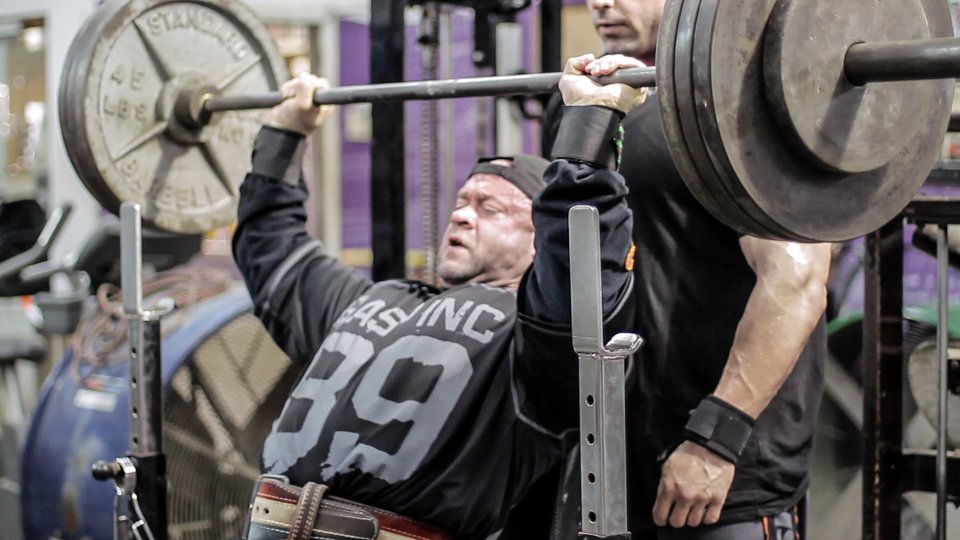 Ultimately, it’s important to note that you can achieve stimulating reps at any weight, as long as you train close to failure (17). This has been shown in studies in which subjects made just as solid of gains training at 30% 1RM as they did at 80% 1RM (13). This can be one last method to help stave off plateaus – constantly adjusting intensity, while still achieving stimulating reps, can help you achieve overload without breaking you down.
Ultimately, it’s important to note that you can achieve stimulating reps at any weight, as long as you train close to failure (17). This has been shown in studies in which subjects made just as solid of gains training at 30% 1RM as they did at 80% 1RM (13). This can be one last method to help stave off plateaus – constantly adjusting intensity, while still achieving stimulating reps, can help you achieve overload without breaking you down.
Alright, so with the most popular method out of the way, what are the other forms of progressive overload?
Method 2: Changing Exercises
Now, before we get started, recall the difference between progressive overload and progressive resistance. Changing exercises is a form of overload in which the biomechanical properties of the movement change – hopefully to make the movement more difficult. An easy way to envision this would be progressing from a goblet squat to a front squat and then to a back squat. While each squat variation will also likely allow more weight to be used, the inherent difficulty increases in each movement since the mechanical advantage decreases.
With the goblet squat, you have the weight near your center of gravity. Therefore, it does not challenge core muscles to a great degree nor will it engage the glutes as much due to the position of the weight. As you move to a front squat, you will likely progress in resistance as it’s easier to add weight to a barbell than to hold a heavier dumbbell, but you’ll also decrease the mechanical advantage you had over the weight. Now the weight is at your collarbone and, therefore, will challenge your core muscles (especially spinal erectors) to a greater degree. You’ll also get more glute and lower back engagement due to the position of the load.
And then, lastly, we move to the back squat. Now, most people would agree that a front squat is harder than a back squat on the basis that you can easily back squat more than you can front squat. But wait, that would be progressive resistance then, right? Right. You can use more weight in the back squat!
However, for any coaches or trainers out there, you all know that it is much easier to teach the front squat than the back squat. The placement of the load in the front squat reduces the range of motion required at the ankle and it also forces prefect squatting form (10). Back squats require a little more mobility and technique to perfect and, therefore, increase the inherent difficulty of the exercise.
Another benefit of changing exercises is that research has shown that exercise variation is more effective for strength gains than simply sticking with the same exercise (8). With this in mind, increasing both strength and technical proficiency in a particular movement can lead to progressive resistance and achieved overload over time. On that note, changing exercises to increase biomechanical difficulty can be a cyclical activity too – move through the progressions and improve strength, and when return to the initial movement, your strength on the movement will have increase tremendously which allows you to perform more stimulating reps on that exercise
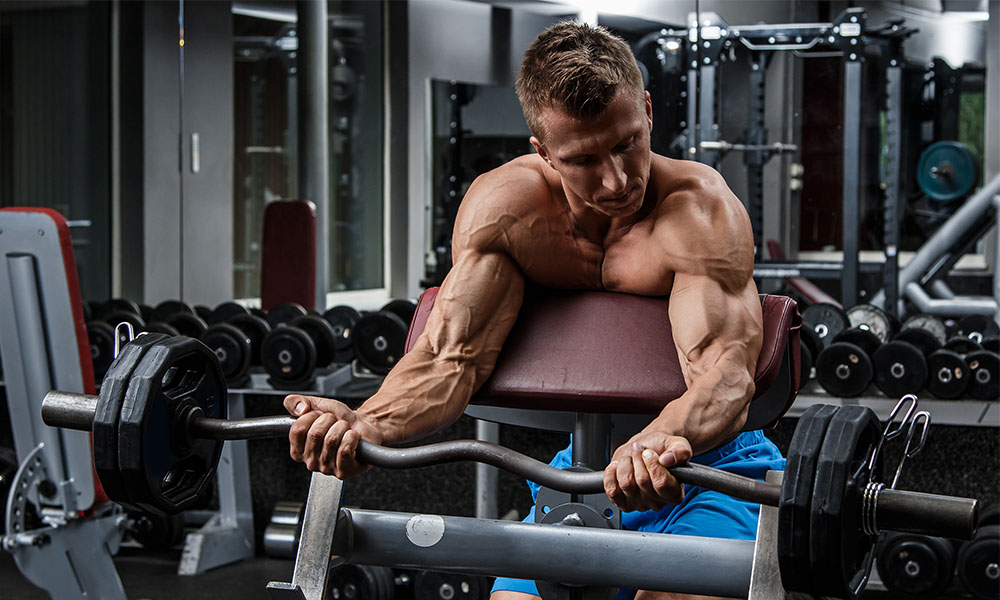 One last benefit of changing exercises stems from the idea of regional hypertrophy. Studies have shown that muscles do not always grow in a uniform fashion (1). In fact, the most active compartment of a muscle during an exercise will grow the most during a long-term training program using that exercise (19). This is why performing flat bench over time will develop the lower pecs whereas incline bench press will regionally develop the upper pecs (2). Therefore, exercise variation is a necessary form of progressive overload for bodybuilders looking to maximize muscle growth. Not only do you need to worry about applying stimulating reps to a specific muscle, but you’ll also have to focus on applying stimulating reps to specific compartments of the muscle.
One last benefit of changing exercises stems from the idea of regional hypertrophy. Studies have shown that muscles do not always grow in a uniform fashion (1). In fact, the most active compartment of a muscle during an exercise will grow the most during a long-term training program using that exercise (19). This is why performing flat bench over time will develop the lower pecs whereas incline bench press will regionally develop the upper pecs (2). Therefore, exercise variation is a necessary form of progressive overload for bodybuilders looking to maximize muscle growth. Not only do you need to worry about applying stimulating reps to a specific muscle, but you’ll also have to focus on applying stimulating reps to specific compartments of the muscle.
Since we keep complicating the topic of progressive overload, let’s continue with the next method: Contraction Types and Repetition Speed.
Method 3: Contraction Types and Repetition Speed
We’ll lump these together as they’re somewhat intertwined. The first major method of creating progressive overload would be a progressive resistance method for the eccentric portion of a lift. Our muscles can produce anywhere from 25-50% more force during eccentric actions compared to concentric actions (3). Therefore, muscle activation during the eccentric portion of a lift is actually lower than it is during the concentric as fewer motor units have to be activated to perform a normal lift (16).
Therefore, during normal lifts, the muscle really isn’t stimulated to a great degree during the eccentric portion. So, all of the praise we hear about eccentrics really isn’t warranted unless you’re performing eccentric overloads (15). To perform eccentric overloads, you’re going to have to load up at least 110% of your 1RM and lower the weight as slow as possible – you can have a partner assist on the concentric or you can simply lower to safety racks. You can also perform these in unilateral machine exercises, like a leg press or preacher curl, in which you lower the weight with one leg/arm but perform the concentric with both legs/arms.
Adding eccentric overloads to a training program would count as progressive overload and resistance and would also likely count as achieved overload since you’re probably using a weight you’ve never touched before. Be careful with these, though, as they can certainly be dangerous and will cause a great deal of muscle damage (6).
Repetition speed is another method of progressive overload, but would not count as progressive resistance by any means. Altering repetition speed is most often performed by doing things like speed squats, dynamic bench press, etc. Essentially, performing movements with lighter weights (40-60% 1RM) for sets of 2-5 reps as fast as possible. While this method won’t increase muscle growth, it can certainly improve multiple factors that contribute to muscle strength and power (12). This includes retaining type IIx muscle fibers, increasing motor unit coordination, and increasing rate coding – which refers to how quickly your brain can send signals to the muscle to contract (11).
While, again, none of these adaptations would increase muscle size, these adaptations can improve strength in specific movements. So, therefore, you could achieve progressive resistance in the long term by adding in dynamic/speed work – especially if you’ve never done it before.
With that out of the way, let’s talk about one last method of progressive overload that can be useful for bodybuilders.
Method 4: Range of Motion
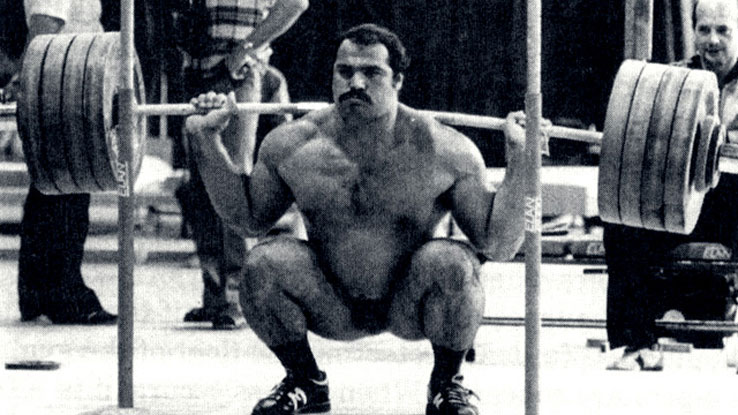 We know from earlier in this piece that muscles do not grow uniformly – the portion of a muscle that is most active during an exercise will grow the most over the long term (19). And, from the above discussion, we know that we can emphasize certain portions of a muscle using certain exercises. However, range of motion can also play a role in isolating specific muscle segments.
We know from earlier in this piece that muscles do not grow uniformly – the portion of a muscle that is most active during an exercise will grow the most over the long term (19). And, from the above discussion, we know that we can emphasize certain portions of a muscle using certain exercises. However, range of motion can also play a role in isolating specific muscle segments.
Altering the range of motion of an exercise will change the length at which a muscle produces force. If you use a shortened range of motion, such as a quarter squat, you will cause the muscle to produce force in a shortened state – this will likely induce growth closer to the muscle’s origin rather than insertion. We see evidence of this in studies that show increased upper thigh growth but no lower thigh development in subjects performing quarter squats (4). The reduction in range of motion might cause the muscle fiber to deform in a shortened (bulging) state (9) which may be one reason why reducing ROM can emphasize certain portions of a muscle.
Therefore, altering range of motion in a specific exercise could be a unique way to overload specific portions of a muscle if you feel that they are lagging behind. Nonuniform growth has been seen in several studies and can be a result of exercise specificity, range of motion used, and even individual biomechanics (14). Since you already know that exercise variations can be one effective way of combatting specificity and even personal biomechanics to a degree, using novel ranges of motion in specific exercises may be a unique way to induce growth.
Conclusion
Now, there are other ways to create planned progressive overload, but not all of them apply to bodybuilding very well so they’re outside the scope of this piece. I have no doubt that, for some, all this article did was offer further confusion on the subject. Which, frankly, is kind of the goal. No subject in the exercises sciences is really decided knowledge/truth – we are constantly reshaping our theories and beliefs with emerging literature and findings.
Ultimately, there are several ways to plan progressive overload in a training program, but the only way to know if your plan is working or not is to actually achieve this overload through increasing weight or performing more reps at a specific weight – with perfect form, of course. Everything mentioned in this article is a tool to use in your arsenal for planning progressive overload and achieving some sweet, sweet gains.
Lastly, as important as the biological sciences and biomechanics are for training and gains, don’t ever discount the effort component of training. I am often guilty of this myself – I’ll sometimes question why I am doing something and what purpose it serves rather than just going balls to the wall to grow. At the end of the day, your gains are going to be predicated on how much effort you can expend and how long you are able to maintain this intensity – through staying healthy by both optimizing training and diet. As Jim Wendler once said, “You want science and studies? F*** you. I’ve got scars and blood and vomit.” And at Team Muscle PhD we say, “Why not both?”
References
- Antonio, J. (2000). Nonuniform response of skeletal muscle to heavy resistance training: Can bodybuilders induce regional muscle hypertrophy? The Journal of Strength & Conditioning Research, 14(1), 102-113.
- Barnett, C., Kippers, V., & Turner, P. (1995). Effects of variations of the bench press exercise on the EMG activity of five shoulder muscles. The Journal of Strength & Conditioning Research, 9(4), 222-227.
- Beardsley, C. (2018). Do eccentric and concentric training produce different types of muscle growth? Retrieved from: https://medium.com/@SandCResearch/do-eccentric-and-concentric-training-produce-different-types-of-muscle-growth-ec66197b0f5c
- Bloomquist, K., Langberg, H., Karlsen, S., Madsgaard, S., Boesen, M., & Raastad, T. (2013). Effect of range of motion in heavy load squatting on muscle and tendon adaptations. European Journal of Applied Physiology, 113(8), 2133-2142.
- Bompa, T. O., & Buzzichelli, C. (2018). Periodization-: theory and methodology of training. Human Kinetics. Champaign, IL.
- Dolezal, B. A., Potteiger, J. A., Jacobsen, D. J., & Benedict, S. H. (1998). Muscle damage and resting metabolic rate after acute resistance exercise with an eccentric overload. Medicine and Science in Sports and Exercise, 1202-1207.
- Fleck, S. J., & Kraemer, W. (2014). Designing resistance training programs, 4E. Human Kinetics. Champaign, IL.
- Fonseca, R. M., Roschel, H., Tricoli, V., de Souza, E. O., Wilson, J. M., Laurentino, G. C., … & Ugrinowitsch, C. (2014). Changes in exercises are more effective than in loading schemes to improve muscle strength. The Journal of Strength & Conditioning Research, 28(11), 3085-3092.
- Franchi, M. V., Wilkinson, D. J., Quinlan, J. I., Mitchell, W. K., Lund, J. N., Williams, J. P., … & Narici, M. V. (2015). Early structural remodeling and deuterium oxide‐derived protein metabolic responses to eccentric and concentric loading in human skeletal muscle. Physiological Reports, 3(11), e12593.
- Gullett, J. C., Tillman, M. D., Gutierrez, G. M., & Chow, J. W. (2009). A biomechanical comparison of back and front squats in healthy trained individuals. The Journal of Strength & Conditioning Research, 23(1), 284-292.
- Haff, G. G., & Triplett, N. T. (Eds.). (2015). Essentials of strength training and conditioning 4th edition. Human Kinetics. Champaign, IL.
- Lacerda, L. T., Martins-Costa, H. C., Diniz, R. C., Lima, F. V., Andrade, A. G., Tourino, F. D., … & Chagas, M. H. (2016). Variations in repetition duration and repetition numbers influence muscular activation and blood lactate response in protocols equalized by time under tension. The Journal of Strength & Conditioning Research, 30(1), 251-258.
- Mitchell, C. J., Churchward-Venne, T. A., West, D. W., Burd, N. A., Breen, L., Baker, S. K., & Phillips, S. M. (2012). Resistance exercise load does not determine training-mediated hypertrophic gains in young men. Journal of Applied Physiology, 113(1), 71-77.
- Newmire, D. E., & Willoughby, D. S. (2018). Partial Compared with Full Range of Motion Resistance Training for Muscle Hypertrophy: A Brief Review and an Identification of Potential Mechanisms. The Journal of Strength & Conditioning Research, 32(9), 2652-2664.
- Ottinger, C. R., & Wilson, J. M. (2019). Eccentrics and growth. Retrieved from: https://themusclephd.com/eccentrics-and-growth/
- Pasquet, B., Carpentier, A., & Duchateau, J. (2006). Specific modulation of motor unit discharge for a similar change in fascicle length during shortening and lengthening contractions in humans. The Journal of Physiology, 577(2), 753-765.
- Sundstrup, E., Jakobsen, M. D., Andersen, C. H., Zebis, M. K., Mortensen, O. S., & Andersen, L. L. (2012). Muscle activation strategies during strength training with heavy loading vs. repetitions to failure. The Journal of Strength & Conditioning Research, 26(7), 1897-1903.
- Wackerhage, H., Schoenfeld, B. J., Hamilton, D. L., Lehti, M., & Hulmi, J. J. (2018). Stimuli and sensors that initiate skeletal muscle hypertrophy following resistance exercise. Journal of Applied Physiology, 126(1), 30-43.
- Wakahara, T., Miyamoto, N., Sugisaki, N., Murata, K., Kanehisa, H., Kawakami, Y., … & Yanai, T. (2012). Association between regional differences in muscle activation in one session of resistance exercise and in muscle hypertrophy after resistance training. European Journal of Applied Physiology, 112(4), 1569-1576.
From being a mediocre athlete, to professional powerlifter and strength coach, and now to researcher and writer, Charlie combines education and experience in the effort to help Bridge the Gap Between Science and Application. Charlie performs double duty by being the Content Manager for The Muscle PhD as well as the Director of Human Performance at the Applied Science and Performance Institute in Tampa, FL. To appease the nerds, Charlie is a PhD candidate in Human Performance with a master’s degree in Kinesiology and a bachelor’s degree in Exercise Science. For more alphabet soup, Charlie is also a Certified Strength and Conditioning Specialist (CSCS), an ACSM-certified Exercise Physiologist (ACSM-EP), and a USA Weightlifting-certified performance coach (USAW).


